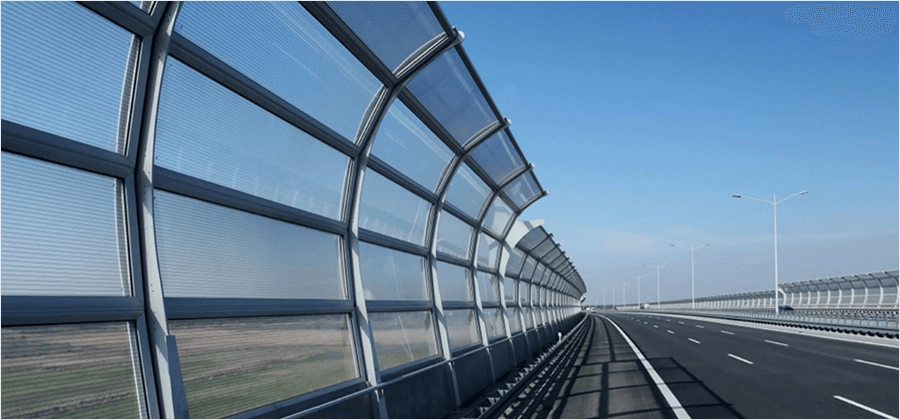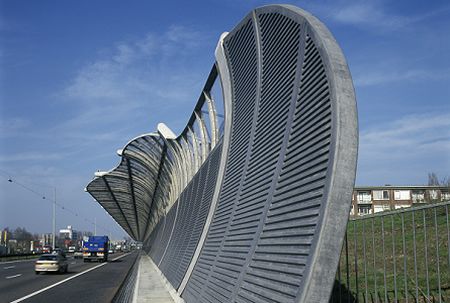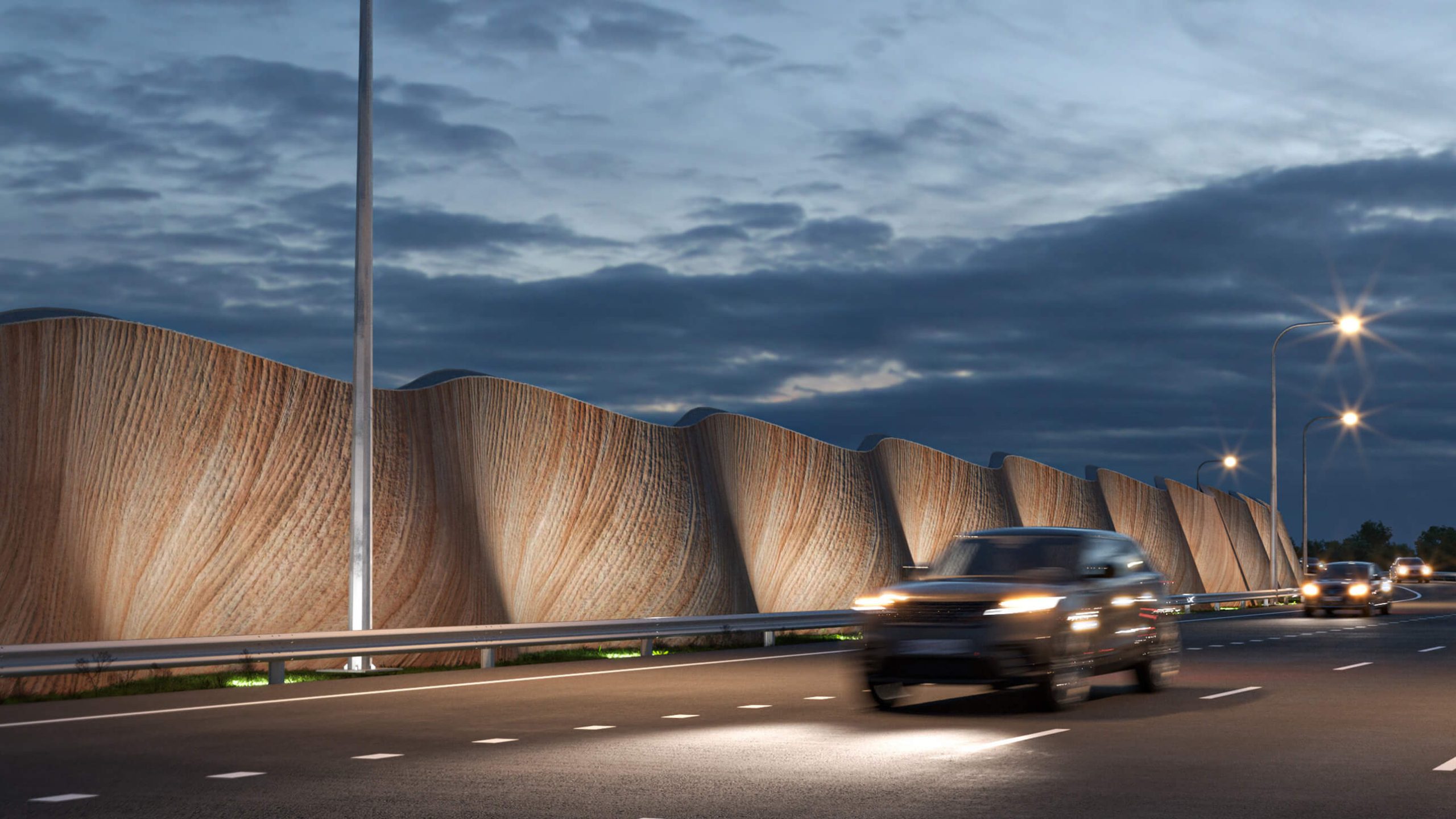The design of road infrastructure is a critical factor in urban planning, influencing traffic flow, safety, and environmental quality. In regions like Dubai and the UAE, where rapid urbanization and high traffic volumes are prevalent, addressing noise pollution has become increasingly important. Car sound barriers are essential components that work in conjunction with road infrastructure to mitigate noise and enhance the quality of urban life. This article explores the intricate connection between car sound barriers and road infrastructure design, highlighting their importance, implementation strategies, and impact on urban environments.
The Role of Road Infrastructure in Noise Pollution
Road infrastructure, encompassing highways, urban streets, and transportation hubs, is a major source of noise pollution. Vehicles generate noise through engines, tires, and aerodynamic interactions, which is exacerbated in densely populated areas. According to the World Health Organization (WHO), noise pollution above 55 decibels can cause adverse health effects, including stress and cardiovascular diseases. In urban areas like Dubai, the constant exposure to traffic noise necessitates effective solutions to protect public health and enhance living conditions.

Car Sound Barriers: An Overview
Car sound barriers are structures designed to block or reduce the transmission of noise from roadways to adjacent areas. These barriers use materials with sound-absorbing and sound-reflecting properties to diminish the impact of traffic noise. The effectiveness of a sound barrier depends on its height, length, and the materials used. Common materials include concrete, metal, acrylic, and advanced composites, each chosen for their specific acoustic properties and durability.
Integration of Sound Barriers in Road Infrastructure Design
The integration of sound barriers into road infrastructure requires meticulous planning and engineering. The following aspects are crucial for successful implementation:
- Site Analysis and Planning Effective sound barrier implementation begins with a thorough site analysis. Engineers assess the topography, traffic patterns, and noise levels to determine the most effective locations for barriers. This planning ensures that barriers are placed where they can provide maximum noise reduction.
- Material Selection The choice of materials is pivotal in the design of sound barriers. Materials like concrete and metal are durable and provide excellent sound reflection, while acrylic and composites offer transparency and aesthetic appeal. The selection depends on factors such as cost, environmental conditions, and specific noise reduction requirements.
- Design and Aesthetics Sound barriers must be designed to blend with the surrounding environment. In urban areas like Dubai, aesthetic considerations are essential to maintain the visual appeal of the city. Modern sound barriers incorporate artistic elements and landscaping to enhance their integration into the urban landscape.
- Construction Techniques The construction of sound barriers involves advanced techniques to ensure stability and longevity. Foundations must be robust to support the weight and withstand environmental factors like wind and temperature fluctuations. Proper construction methods also ensure that barriers effectively block or absorb noise.

Impact of Car Sound Barriers on Urban Environments
The implementation of car sound barriers has profound effects on urban environments:
- Noise Reduction The primary benefit of sound barriers is the significant reduction in noise levels. Studies have shown that effective sound barriers can reduce traffic noise by up to 10-15 decibels, providing a quieter environment for residents and businesses near busy roadways.
- Improved Public Health Reducing noise pollution has direct benefits for public health. Lower noise levels decrease the risk of stress-related health issues, improve sleep quality, and enhance overall well-being. In densely populated areas like Dubai, these health benefits are particularly important.
- Enhanced Quality of Life Quieter urban environments contribute to a higher quality of life. Reduced noise pollution allows for more peaceful residential areas, better working conditions in commercial zones, and more enjoyable public spaces. This enhancement in living conditions is vital for the sustainability of urban areas.
- Environmental Benefits Sound barriers also contribute to environmental sustainability. By reducing noise pollution, they help protect urban wildlife and promote biodiversity. Additionally, many modern sound barriers are made from eco-friendly materials, further supporting environmental goals.
Challenges in Implementing Car Sound Barriers
While the benefits of car sound barriers are clear, their implementation presents several challenges:
- Cost Considerations The construction and maintenance of sound barriers can be expensive. The costs include materials, labor, and ongoing maintenance to ensure the barriers remain effective. Balancing these costs with the benefits requires careful financial planning and prioritization.
- Space Constraints Urban areas often face space constraints that limit the placement of sound barriers. Finding suitable locations that do not impede traffic flow or encroach on residential and commercial spaces can be challenging. Innovative design solutions are needed to address these constraints.
- Maintenance Requirements Sound barriers require regular maintenance to remain effective. Weather conditions, pollution, and physical damage can degrade their performance over time. Establishing a maintenance schedule and allocating resources for repairs is essential for long-term success.

Future Directions in Sound Barrier Technology
Advancements in technology are driving the development of more efficient and sustainable sound barriers:
- Smart Sound Barriers The integration of smart technologies into sound barriers is a growing trend. These barriers can incorporate sensors to monitor noise levels, structural integrity, and environmental conditions. Data collected from these sensors can optimize barrier performance and maintenance schedules.
- Innovative Materials Research into new materials is leading to the development of lighter, more durable, and more effective sound barriers. Nanomaterials, for instance, offer promising acoustic properties and environmental benefits. The use of recycled and eco-friendly materials is also increasing.
- Modular Designs Modular sound barriers are gaining popularity due to their flexibility and ease of installation. These barriers can be quickly assembled and customized to fit specific locations. Modular designs also facilitate easier maintenance and upgrades.
- Integration with Green Infrastructure Combining sound barriers with green infrastructure, such as green walls and vegetative screens, is an emerging trend. These hybrid solutions provide additional environmental benefits, including air purification and aesthetic enhancement, while maintaining noise reduction capabilities.
Conclusion
In contemporary road infrastructure design, car sound barriers are essential, particularly in urban areas that are expanding at a rapid pace, such as Dubai and the United Arab Emirates. They are essential in the improvement of public health, the reduction of noise pollution, and the enhancement of the overall character of urban life. The successful incorporation of sound barriers into road infrastructure necessitates ongoing maintenance, innovative design, and meticulous planning. Smarter, more sustainable sound barriers will continue to be developed in order to support the objectives of sustainable urban mobility as technology advances.

I am a Junior Web Developer for Oswald Technologies. I am an accomplished coder and programmer, and I enjoy using my skills to contribute to the exciting technological advances that happen every day at Oswald Tech.
